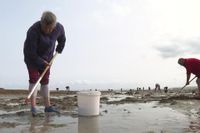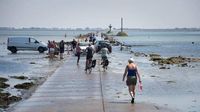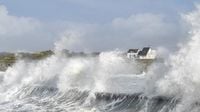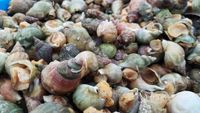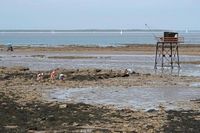From March 28 to April 2, 2025, the largest tides of the year will provide an excellent opportunity for shellfish enthusiasts along the coasts of Vendée, Morbihan, and Finistère. However, caution is urged as numerous fishing spots are now prohibited due to the presence of harmful toxins.
The equinox tides, expected to peak with a maximum coefficient of 114 on Saturday, March 30, will attract many amateur fishermen eager to gather shellfish. These extraordinary tides allow access to areas of the foreshore that are usually submerged, making it a prime time for collecting clams, cockles, whelks, and other seafood.
Yet, the prefectures have issued warnings regarding contaminated shellfish in many regions. In Morbihan, certain shellfish have been found to be contaminated with phycotoxins, prompting the prefecture to prohibit all fishing activities. "Phycotoxins are algal toxins produced by certain species of phytoplankton that can accumulate in shellfish and pose health risks to consumers," the local authorities stated.
The ingestion of contaminated shellfish can lead to severe gastrointestinal symptoms followed by neurological disorders, including disorientation, confusion, memory loss, convulsions, and even coma or death. Due to these risks, fishing and harvesting are strictly forbidden in several areas, including the Baie de Plouharnel, Rivière d'Etel, Rade de Lorient-Groix, and the coastal strip between the Rivière d’Etel and Penthièvre (only for tellines).
In Finistère, similar measures have been implemented due to the presence of amnesic toxins produced by phytoplankton. The prefecture has announced a ban on both recreational and professional fishing in the marine zone "Iroise Camaret Sud estran." This includes critical areas such as the Rivière de Pont-L'Abbé and the Baie de Concarneau.
As the tides approach, the prefectures are urging caution. "Prudence en mer et sur la côte," the prefect of Brittany and Ille-et-Vilaine warned on social media. Fishermen are advised to consult tide schedules and weather forecasts before venturing out. Setting alarms on mobile devices to remind themselves to leave the foreshore before the tide rises is also recommended.
For those interested in the tidal schedule, the tides will begin on Friday, March 28, with coefficients of 90 and 97. The highest tides will occur on the following dates:
- Saturday, March 29: Coefficients of 104 and 109
- Sunday, March 30: Coefficients of 112 and 114
- Monday, March 31: Coefficients of 114 and 111
- Tuesday, April 1: Coefficients of 107 and 102
- Wednesday, April 2: Coefficients of 95 and 87
The next significant tides will occur starting April 26, 2025, although with lower coefficients peaking at 107.
In Vendée, the prefecture has also taken precautions. As of Friday, March 28, fishing, collecting, transporting, storing, and selling shellfish for human consumption have been banned along the Baie de Bourgneuf and the coasts of the Île de Noirmoutier and the Île d'Yeu. This decision follows the rapid proliferation of the microalgae pseudo-nitzschia australis, which produces an amnesic toxin that can lead to severe neurological disorders.
Symptoms from consuming contaminated shellfish can manifest within 15 minutes to 48 hours, including confusion and disorientation, and in severe cases, coma. The prefecture advises against consuming shellfish from these areas or those with uncertain origins.
As authorities enforce these bans, they remind recreational fishermen to stay informed about the safety of fishing sites. Fishermen are encouraged to check with local municipalities or visit the website pecheapied-responsable.fr for updates on shellfish safety.
Moreover, in Loire-Atlantique, similar restrictions have been placed due to the presence of toxic microalgae, which can cause serious health issues if ingested. An order was issued prohibiting all fishing and shellfish collection until further notice, affecting both professionals and amateurs.
The prefecture of Loire-Atlantique has also banned the sale and consumption of shellfish in the Loire estuary, particularly affecting the cities of Saint-Nazaire and Saint-Brevin-les-Pins. The contamination is linked to microalgae that can lead to severe health issues, including nausea, vomiting, and neurological symptoms.
As the large tides approach, authorities are keen to ensure public safety while also allowing for recreational activities. They emphasize the importance of adhering to guidelines and restrictions to prevent health risks associated with contaminated shellfish.
In summary, while the upcoming tides present a unique opportunity for shellfish gathering, the health risks posed by contaminated shellfish in various regions cannot be overlooked. Fishermen and seafood enthusiasts are urged to exercise caution and stay informed about local advisories to ensure their safety.
